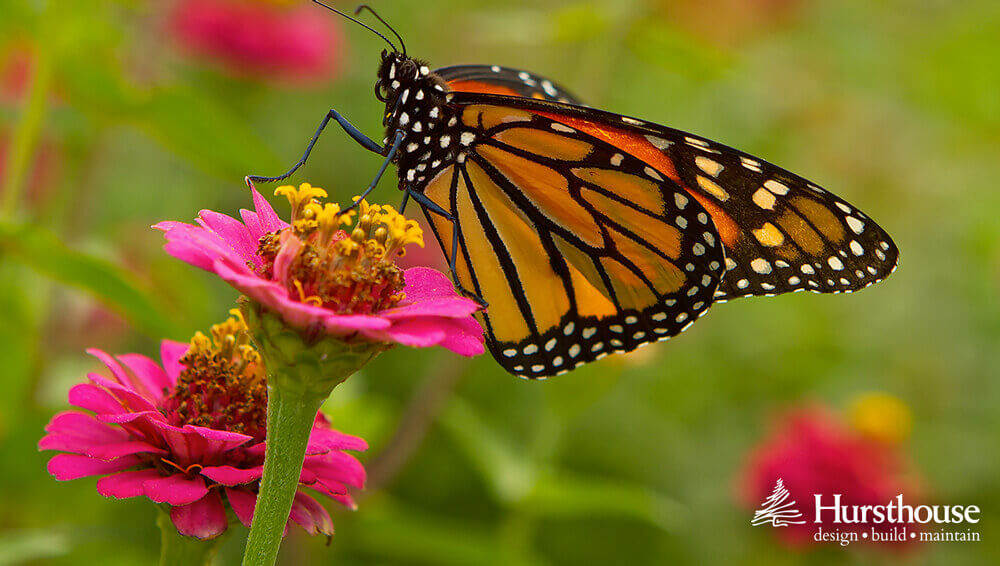Is your landscape design environmentally friendly? That’s a complicated question, and environmentally conscious landscape planning is an ever-evolving study. But there are a few choices you can make right now that will have a positive impact.
As a landscape architect, it’s a given that I love and celebrate the natural world and want to do everything I can to support it. That’s why today I’m sharing four choices—two focusing on water and two on flora and fauna—that you can make to be a friend to the environment.
If you want to plan a “greener” landscape, here are some ways to start.
1. Harvest your rainwater.
Water is the great sustainer of life! But as outdoor hardscapes grow and green spaces shrink, it becomes more important to find ways to stop storm water runoff and keep it onsite.
How? Rain barrels are a great way to capture and retain water so you can use it for watering the garden or washing your car (with eco-friendly soap, of course!) Cisterns are a bigger investment, but a great way to capture storm water and avoid runoff.
Some municipalities are even finding it necessary to require underground infiltration vaults as a best management practice. These vaults fill with water, then let the water percolate down into the ground, helping to keep local aquifers filled.
2. Use permeable pavers.
Permeable pavers are a great way to have the level and strong surface your landscape needs – without the monolithic aspect of concrete or asphalt. These pavers have joints that are filled with fine gravel, allowing water to seep in and disperse slowly. This environmentally friendly choice also looks fabulous.
3. Invite friendly guests.
Choosing flora that support non-damaging insects is a great way to invite some “friendly” guests to spend time in your landscape. For example, you can help restore the monarch butterfly population by planting milkweed – it’s the only plant monarchs will lay their eggs on.
Want to attract songbirds? They feed their young on caterpillars and insects, so depending on what you plant, you could either be limiting or enhancing this food source for them. One oak tree can foster its own delicious ecosystem and make a huge difference to a songbird’s family menu.
4. Foster natural pest management.
Choose the right plants, and your garden might help pest-proof itself. For example, if aphids are a problem – plant geraniums. The ladybugs will come for the geraniums, and stay to enjoy an aphid feast.
In the “circle of life,” there are insects that help and insects that destroy. And when you can encourage the helpers to show up to eat the destroyers, that’s a beautiful thing!
As it turns out, being green comes in a variety of colors. Whether it’s the bright pink of milkweed or the soft grey of permeable pavers, the choices above can make an impact on our world.
And here’s the real beauty: Each of the above tips helps not only the environment, but your landscape, too. I call that a win-win!


